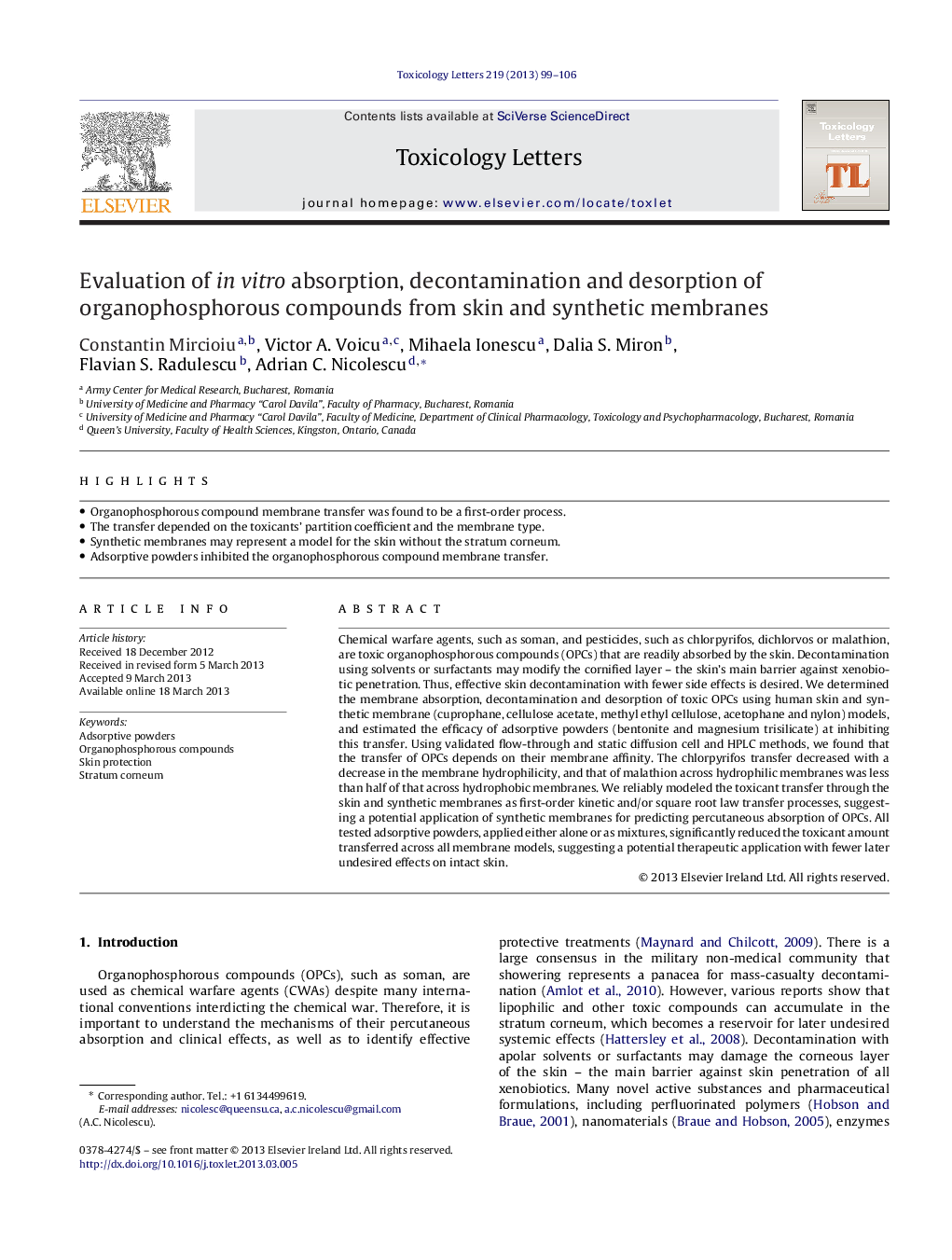| کد مقاله | کد نشریه | سال انتشار | مقاله انگلیسی | نسخه تمام متن |
|---|---|---|---|---|
| 2599193 | 1133195 | 2013 | 8 صفحه PDF | دانلود رایگان |

• Organophosphorous compound membrane transfer was found to be a first-order process.
• The transfer depended on the toxicants’ partition coefficient and the membrane type.
• Synthetic membranes may represent a model for the skin without the stratum corneum.
• Adsorptive powders inhibited the organophosphorous compound membrane transfer.
Chemical warfare agents, such as soman, and pesticides, such as chlorpyrifos, dichlorvos or malathion, are toxic organophosphorous compounds (OPCs) that are readily absorbed by the skin. Decontamination using solvents or surfactants may modify the cornified layer – the skin's main barrier against xenobiotic penetration. Thus, effective skin decontamination with fewer side effects is desired. We determined the membrane absorption, decontamination and desorption of toxic OPCs using human skin and synthetic membrane (cuprophane, cellulose acetate, methyl ethyl cellulose, acetophane and nylon) models, and estimated the efficacy of adsorptive powders (bentonite and magnesium trisilicate) at inhibiting this transfer. Using validated flow-through and static diffusion cell and HPLC methods, we found that the transfer of OPCs depends on their membrane affinity. The chlorpyrifos transfer decreased with a decrease in the membrane hydrophilicity, and that of malathion across hydrophilic membranes was less than half of that across hydrophobic membranes. We reliably modeled the toxicant transfer through the skin and synthetic membranes as first-order kinetic and/or square root law transfer processes, suggesting a potential application of synthetic membranes for predicting percutaneous absorption of OPCs. All tested adsorptive powders, applied either alone or as mixtures, significantly reduced the toxicant amount transferred across all membrane models, suggesting a potential therapeutic application with fewer later undesired effects on intact skin.
Journal: Toxicology Letters - Volume 219, Issue 2, 23 May 2013, Pages 99–106